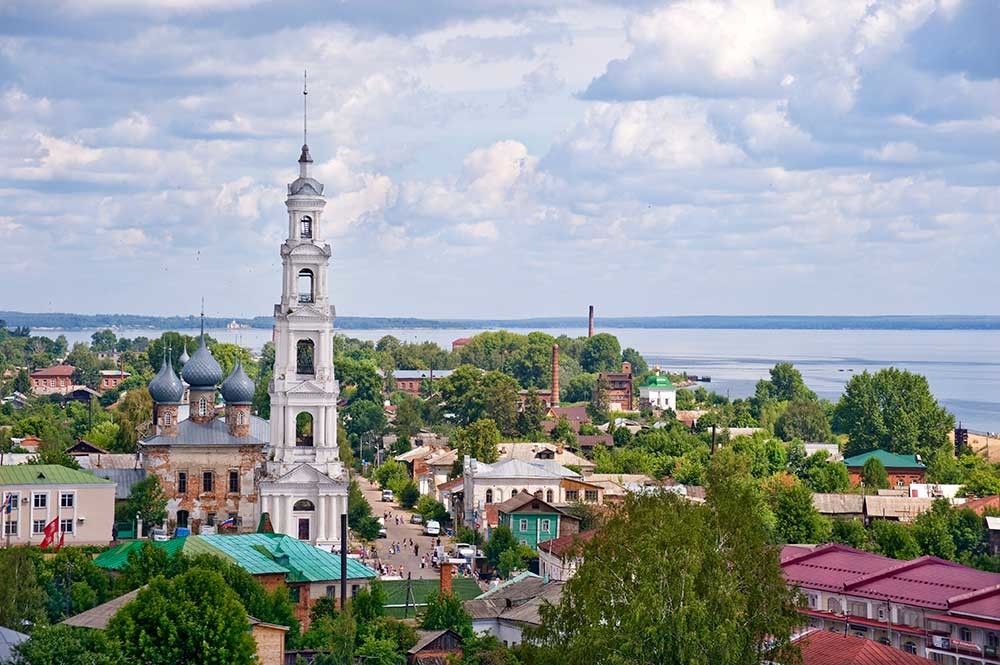
Yurevets. View from fortress hill north along Soviet Street. Left: Cathedral of Entry of Christ into Jerusalem, Bell tower of St. George. Right (near Volga River): Church of the Purification. July 15, 2012.
William BrumfieldAt the beginning of the 20th century, the Russian photographer and inventor Sergei Prokudin-Gorsky devised a complex process for vivid, detailed color photography. His vision of photography as a form of education and enlightenment was demonstrated with special clarity through his photographs of architectural monuments in the historic sites throughout the Russian heartland.
Logistical support for Prokudin-Gorsky’s project came from the Ministry of Transportation, which facilitated his travel on Russia’s waterways and expanding rail network. His work along the Volga River in 1910-1911 proved especially productive. The middle reaches of the Volga unite some of Russia’s best-known historic towns, from Uglich in the north to Yaroslavl and Kostroma northeast of Moscow.
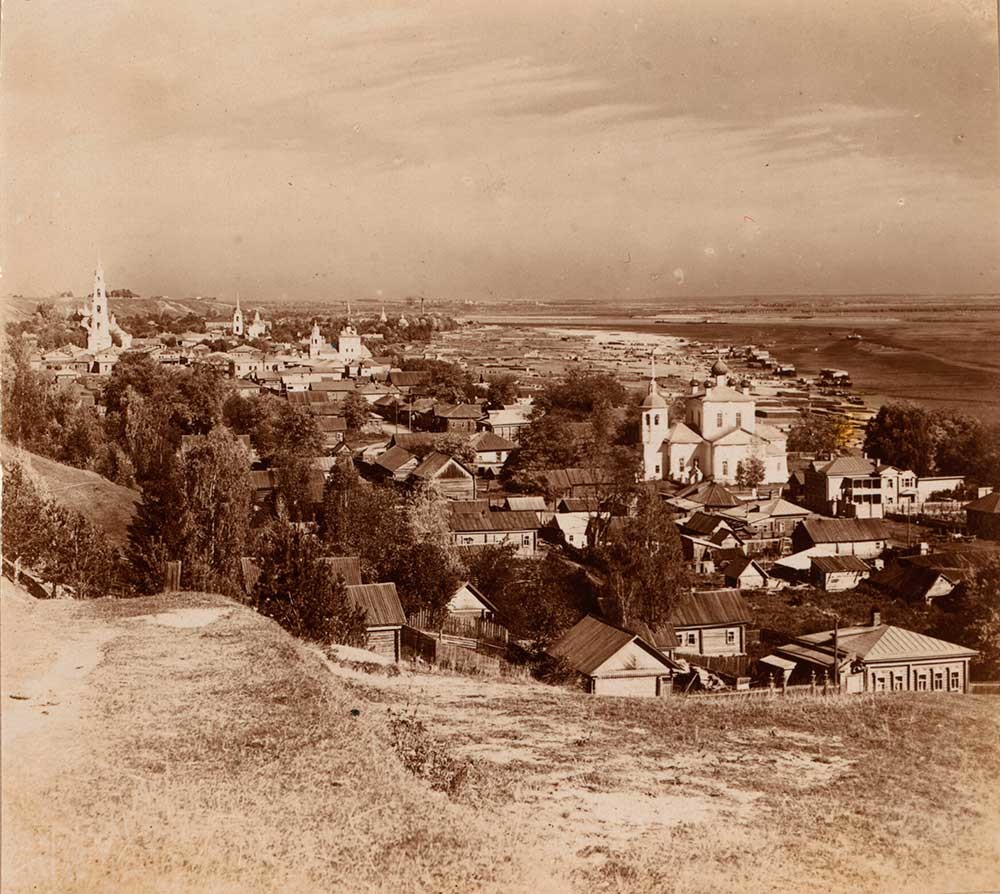
View towards north from fortress hill. From left: bell tower&Cathedral of Entry of Christ into Jerusalem; Church of Transfiguration (razed for bricks in early 1930s); Church of Annunciation (demolished early 1950s ); Church of Purification. Right: Church of Ascension (demolished 1955). Summer 1910.
Sergei Prokudin-GorskyHowever, massive hydroelectric projects that reached fruition in the decade after World War II led to a significant increase in the water level. Although beneficial for navigation and power supply, this increase threatened the existence of certain areas that Prokudin-Gorsky photographed.
Among them was the small town of Yurevets, whose population declined over the past
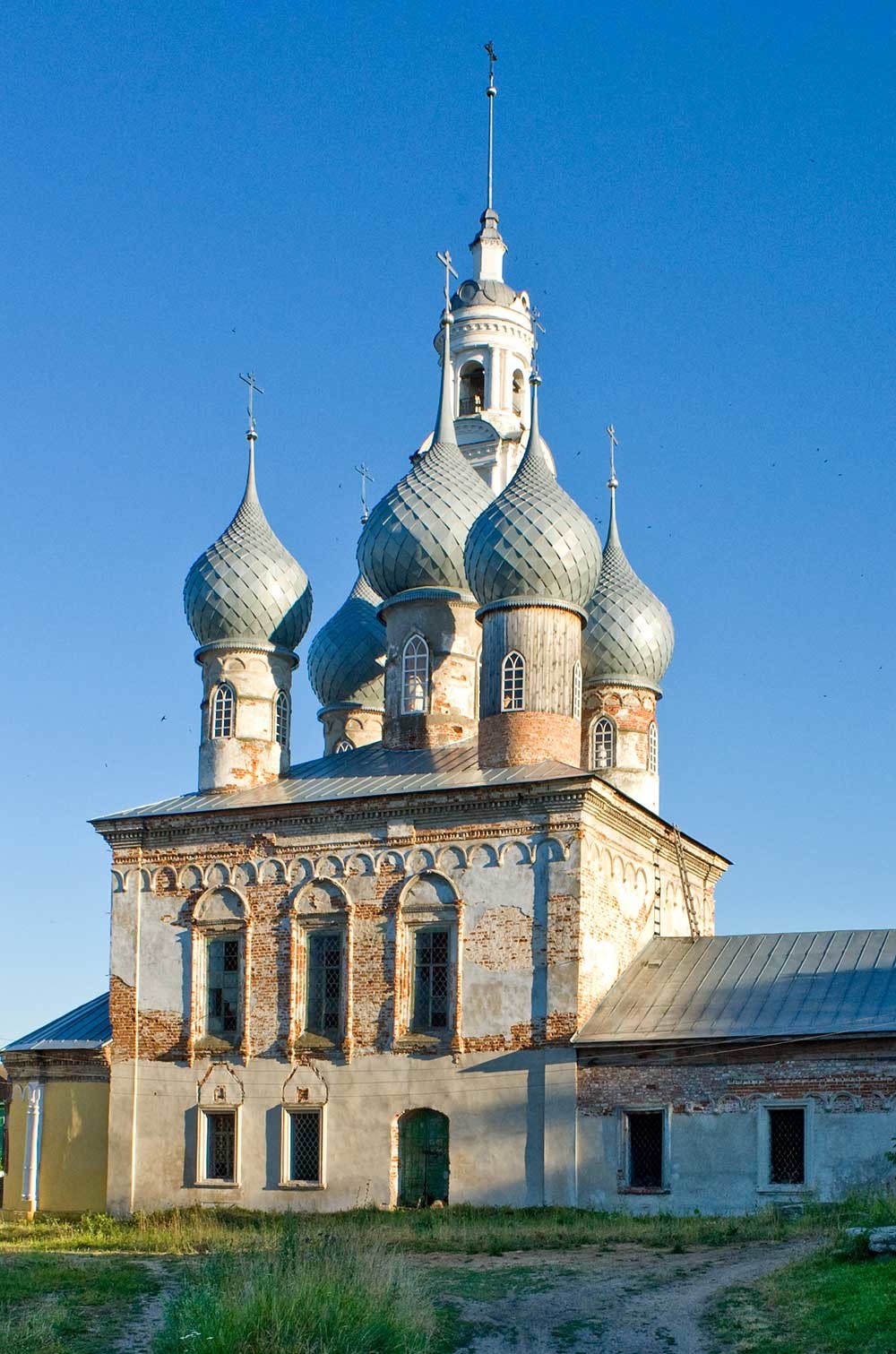
Cathedral of Entry of Christ into Jerusalem. Northwest view. July 14, 2012.
William BrumfieldYurevets is located below Kostroma in an area where the Volga flows due east before turning sharply to the south in the direction of Nizhny Novgorod. This sharp bend on the high right bank formed an ideal point to survey the river over a great distance. It also accounts for the dramatic quality of the town’s landscape—forested bluffs marked by ravines that descend to the main part of Yurevets along the river.
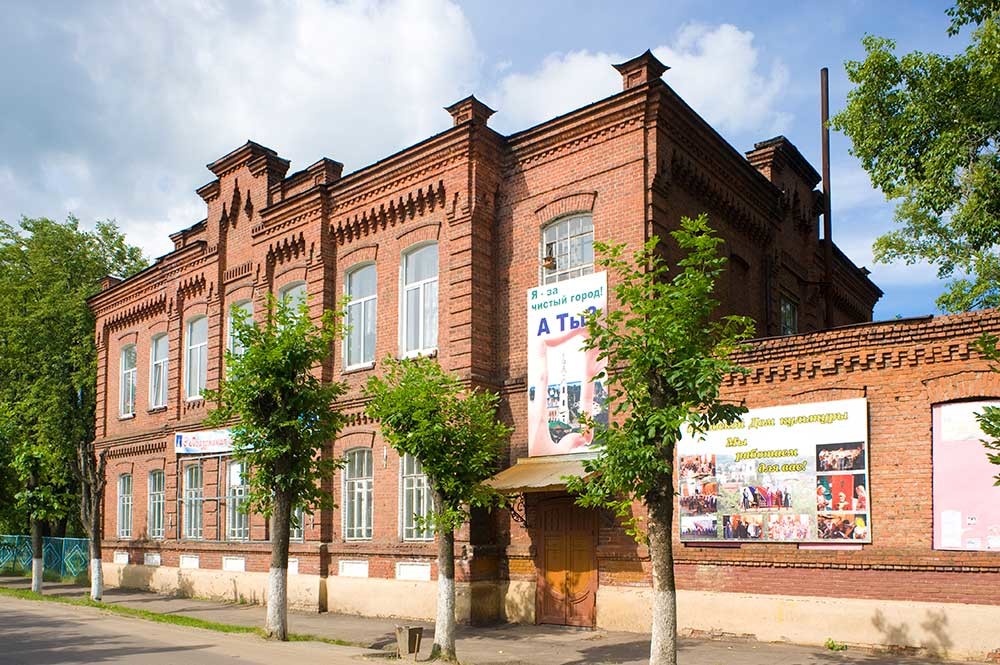
Pre-revolutionary high school, Soviet Street 97. July 15, 2012.
William BrumfieldNo doubt this beauty imprinted itself on the imagination of the town’s most famous son, the filmmaker Andrei Tarkovsky. It also impressed Prokudin-Gorsky, who took sweeping views of the town in the summer of 1910. Although his original glass negatives of Yurevets are missing from the Library of Congress collection, his contact prints give much information about the town and its relation to the river. My photographs of Yurevets were taken just over a century later, in July 2012
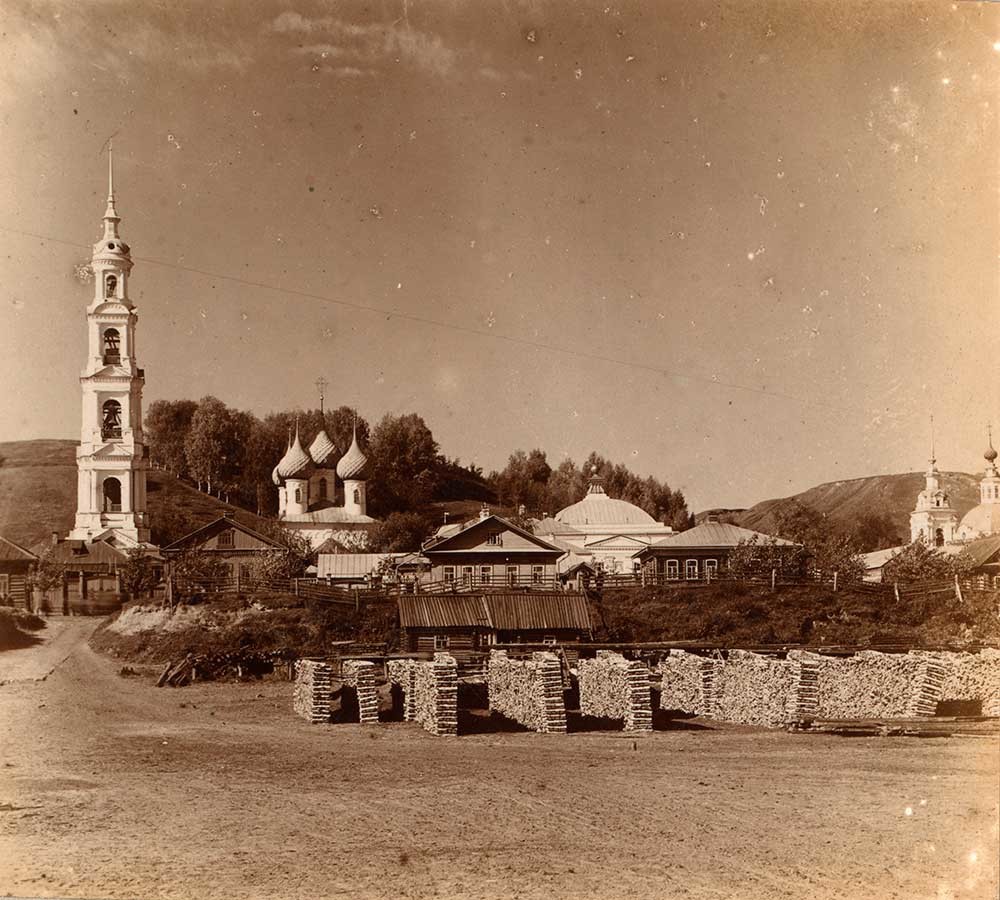
East view from Volga River. From left: Bell tower of St. George; Cathedral of Entry of Christ into Jerusalem; Dormition Cathedral; Church of Nativity of Christ. Summer 1910.
Sergei Prokudin-GorskyLegend has it that during a river journey from Yaroslavl to Vladimir, Yury camped on the site and had a miraculous vision of an icon, or sacred image, of St. George. Responding to the heavenly sign, Yury built a log fort and a wooden church dedicated to St. George. Such legends typically served to sanctify what was a pragmatic decision—in this
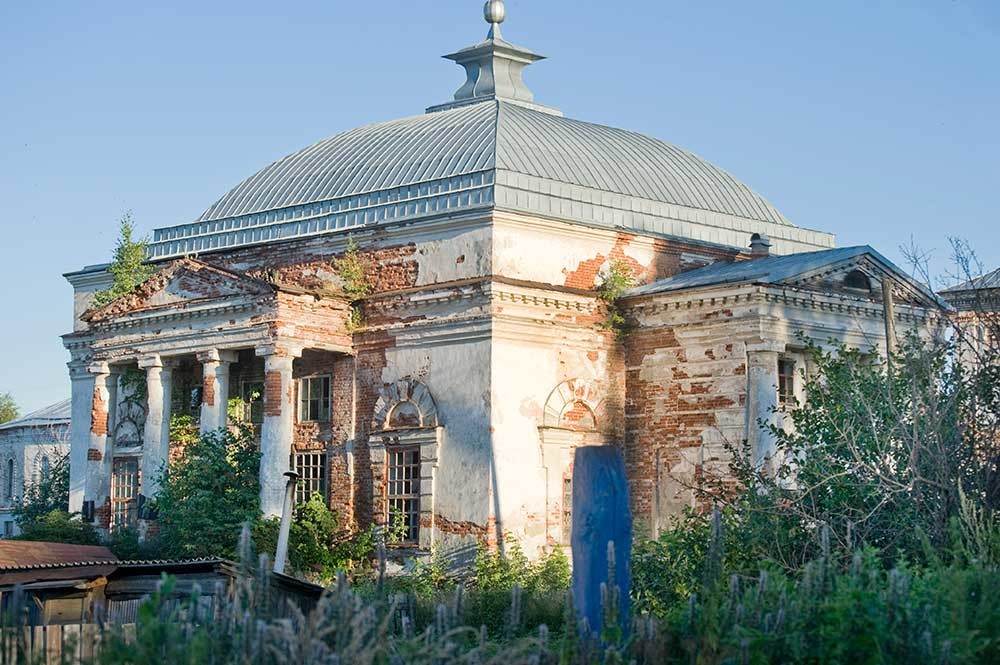
Dormition Cathedral. Northwest view. July 14, 2012.
William BrumfieldJust over a decade after Prince Yury’s vision, the settlement suffered from the Mongol invasion in the winter of 1237-38—the same catastrophe that led to Yury’s death during the Battle on the Seet River (March 4, 1238). The town revived under the authority of regional princes, and in 1452 it was absorbed into the holdings of Basil II (the Blind), grand prince of Moscow. During this period, Yurevets was frequently attacked by Tatar raiders from the south, a threat eliminated in 1552 with Ivan the Terrible’s conquest of Kazan. As a favor, Ivan briefly granted the town to a Tatar prince named
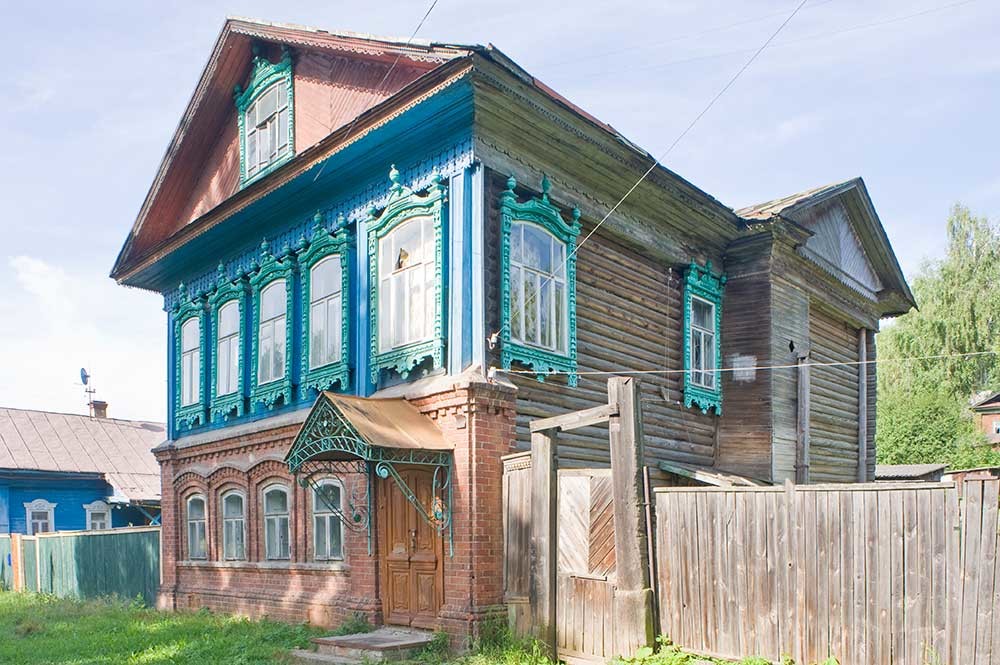
House, Lenin Street 55 (similar to houses in Prokudin-Gorsky view). July 15, 2012.
William BrumfieldIn the early 17th century, a dynastic interregnum known as the Time of Troubles led to widespread disorder in the region. Yurevets enlisted a people’s army led by local nobleman Fyodor Grigorevich Krasny, who in 1613 witnessed the enthronement of Michael Romanov, first tsar of the Romanov dynasty.
In the mid 17th century, Yurevets, like many other Volga towns, was consumed by a schism within the Orthodox Church. For a short period in 1651, the town’s primary priest was Avvakum Petrov (1620-82), who later acquired enduring fame as the spiritual leader of schismatics called Old Believers. (They refused to accept liturgical reforms promulgated by Patriarch Nikon in the 1650s.) Avvakum was uncompromising in his interpretation of proper behavior, and after several weeks of confrontation with parishioners, he abandoned Yurevets for Moscow.
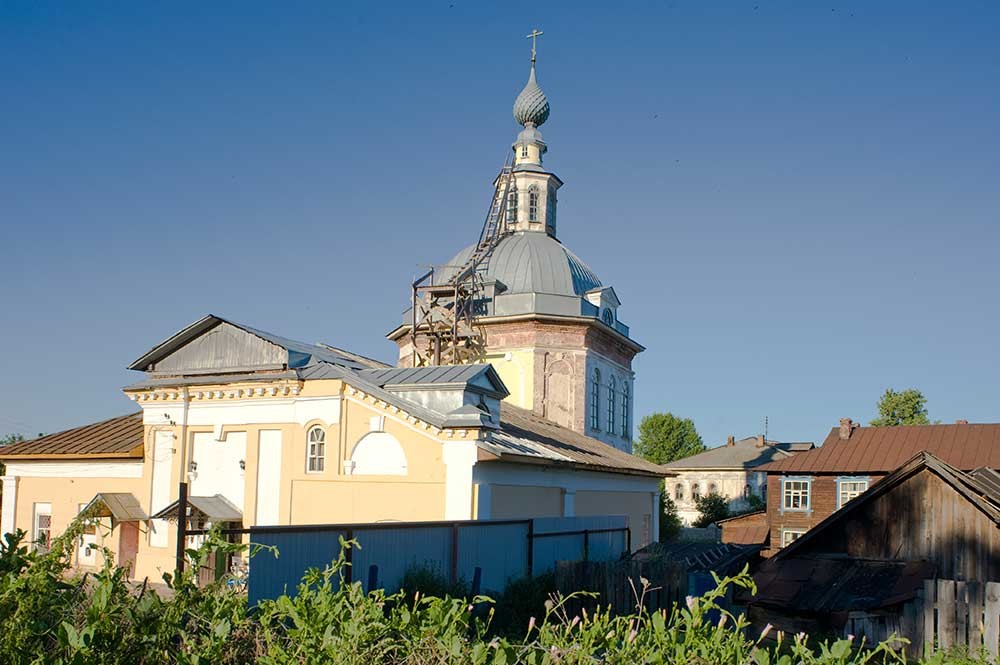
Church of Nativity of Christ. Southwest view. July 14, 2012.
William Brumfield
Cathedral Square, with Bell tower of St. George & Cathedral of Entry of Christ into Jerusalem. View north from fortress hill. July 15, 2012.
William BrumfieldProkudin‑Gorsky photographed the cathedral ensemble from the east near the river’s edge, with stacks of firewood along the flat shore. Although the cathedrals were severely damaged during the Soviet period, the bell tower has remained the town’s dominant landmark, as my photographs from July 2012 dramatically show
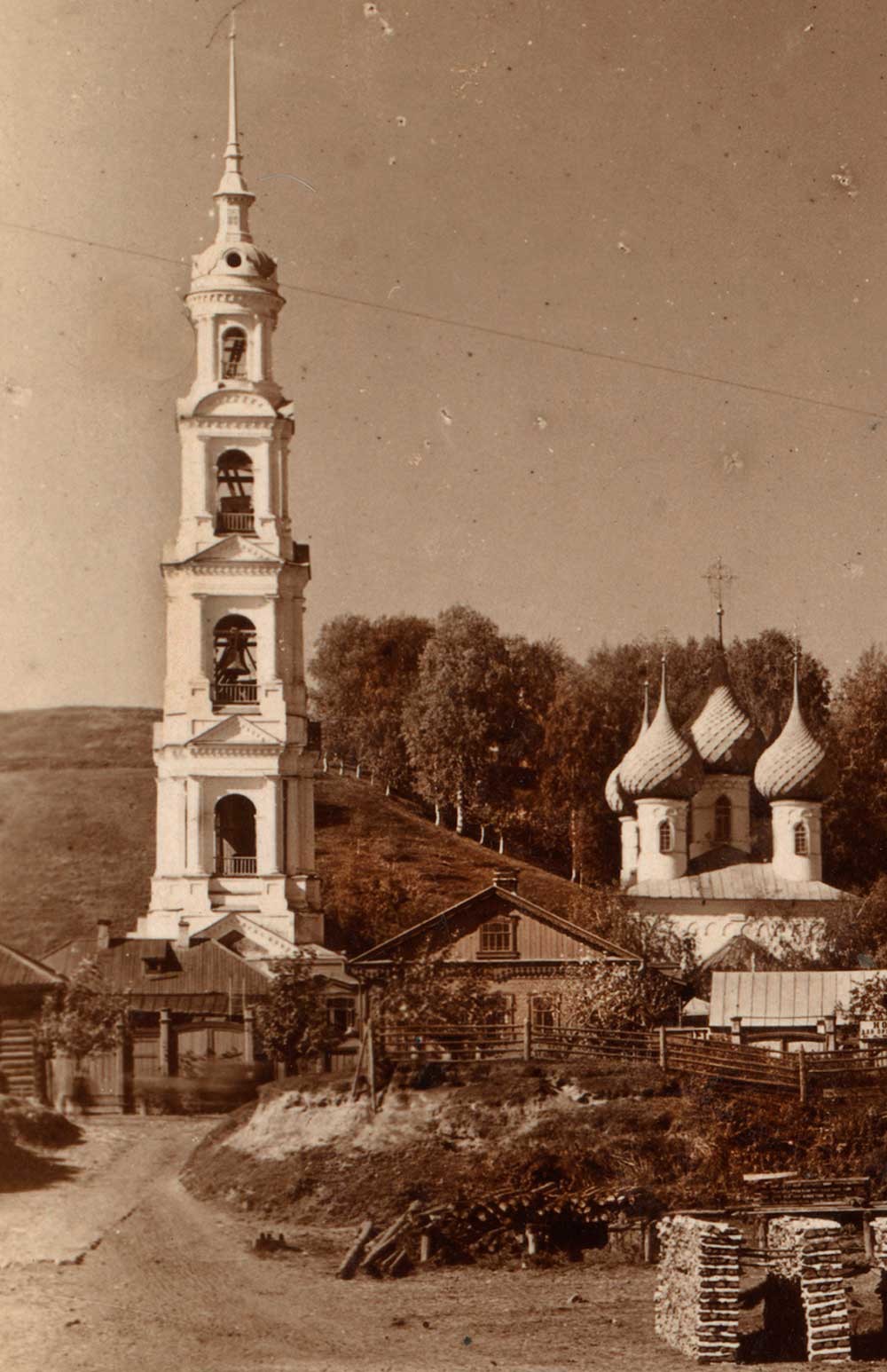
Bell tower of St. George & Cathedral of Entry of Christ into Jerusalem. East view from Volga River. Foreground: stacked firewood. Summer 1910.
Sergei Prokudin-Gorsky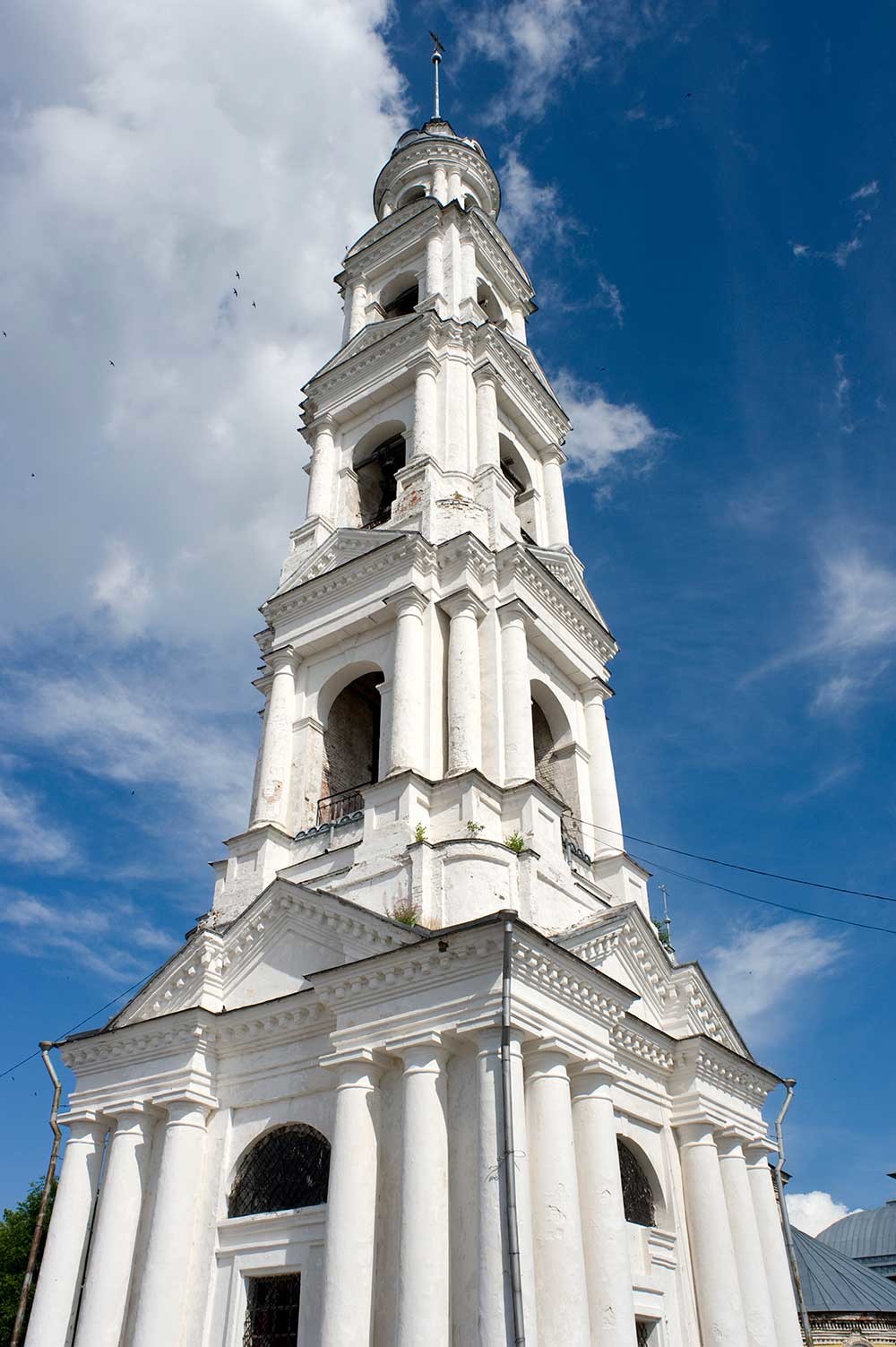
Bell tower with Church St. George. Southeast view. July 15, 2012.
William BrumfieldIf using any of Russia Beyond's content, partly or in full, always provide an active hyperlink to the original material.
Subscribe
to our newsletter!
Get the week's best stories straight to your inbox